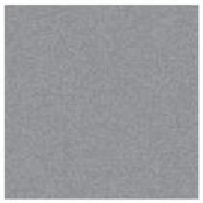Environmental Engineering Reference
In-Depth Information
Figure 5.28. Example of pattern obtained from numerical simulation of VPT model
(
5.49
) with
s
<
s
c
. The parameters are
k
0
=
1,
s
gn
=
0
.
25,
D
=
2, and
=
1.
evolve in time. Moreover, the pdfs of the variable
confirm the absence of phase
transitions, consistent with the results of the mean-field analysis.
If the patterns shown in Fig.
5.27
are compared with those resulting from prototype
model (
5.34
) (see Fig.
5.20
), it is evident that the main characteristics of the steady-
state field are the same. This is because the core of the dynamics is the same in both
models, and it is dictated by two components: (i) the existence of a noise-induced
short-term instability that triggers an initial departure from the homogeneous state
φ
0
=
φ
0, and (ii) a suitable spatial coupling that is able to freeze the dynamics away
from uniform steady-state conditions and to impose a dominant wavelength. Because
the spatial coupling and the type of initial and boundary conditions are the same in both
models, the resulting pattern is then statistically the same, provided that the threshold
of noise intensity is exceeded (i.e.,
s
gn
>
s
c
). Therefore the specific mathematical
structure of functions
f
(
) plays a marginal role: These functions determine
secondary aspects of pattern formation, including, for example, the duration of the
initial transient and some details of the pdf and power spectrum of
φ
)and
g
(
φ
φ
.
Finally, it is worth noticing that the pattern-forming role played by the additive
component of noise allows the emergence of patterns even for parameter values
corresponding to points below or outside the curve of marginal stability displayed in
Fig.
5.26
. Thus patterns can also emerge for pairs of values
, for which the
multiplicative-noise component is unable to induce pattern formation. In this case,
patterns result from the samemechanismas those described in Section
5.2
.Anexample
is shown in Fig.
5.28
that refers to a pattern emerging in subthreshold condition (i.e.,
s
gn
<
{
s
gn
,
D
}
s
c
). Therefore the additive- and multiplicative-noise components cooperate in
forming patterns when the system exhibits a short-term instability, whereas only
the additive component of noise is responsible of noise-induced patterns when this
instability condition is not satisfied.
5.5 Multiplicative noise and non-pattern-forming spatial couplings
In this section, we explore the ability of spatiotemporal models driven bymultiplicative
noise to generate patterns when the spatial coupling does not fall into the class of




Search WWH ::

Custom Search